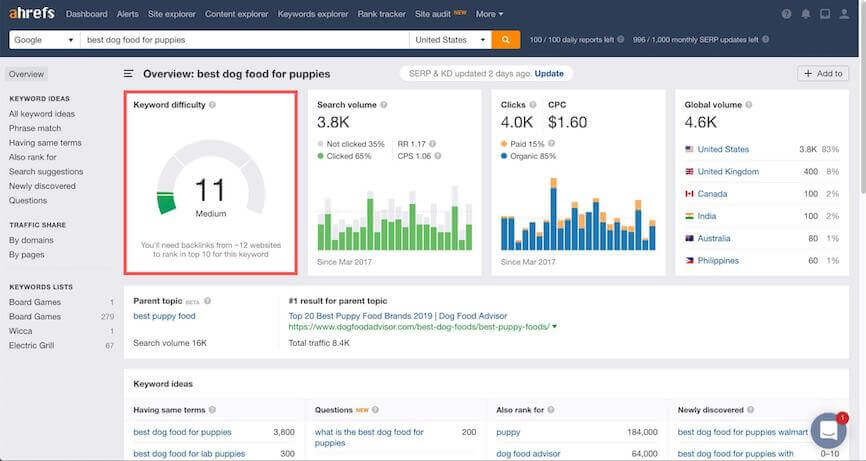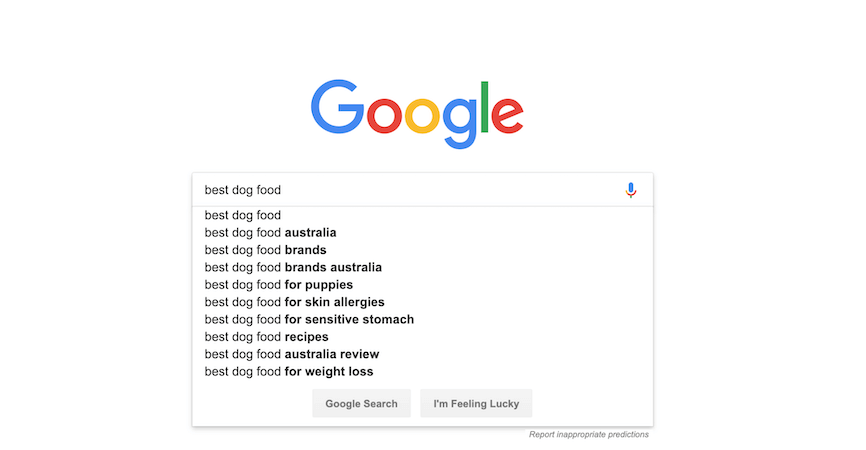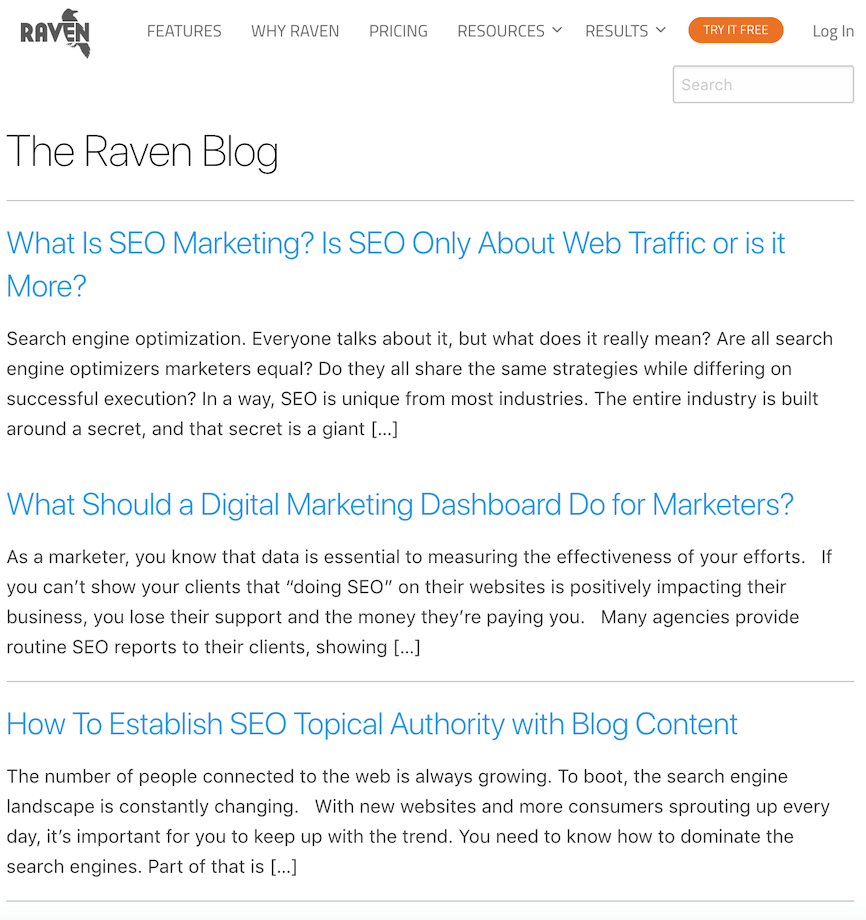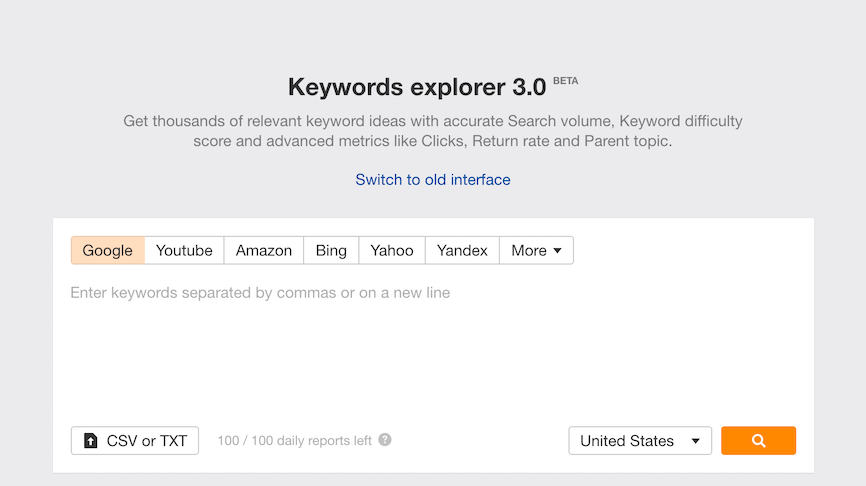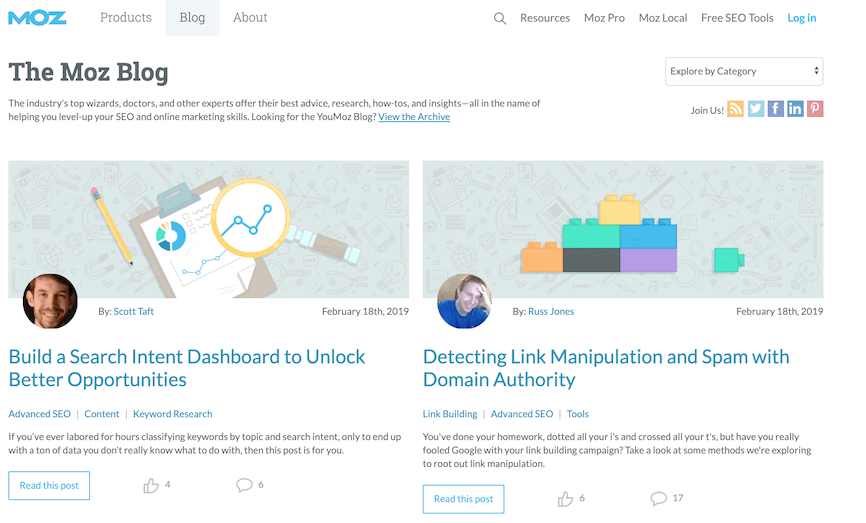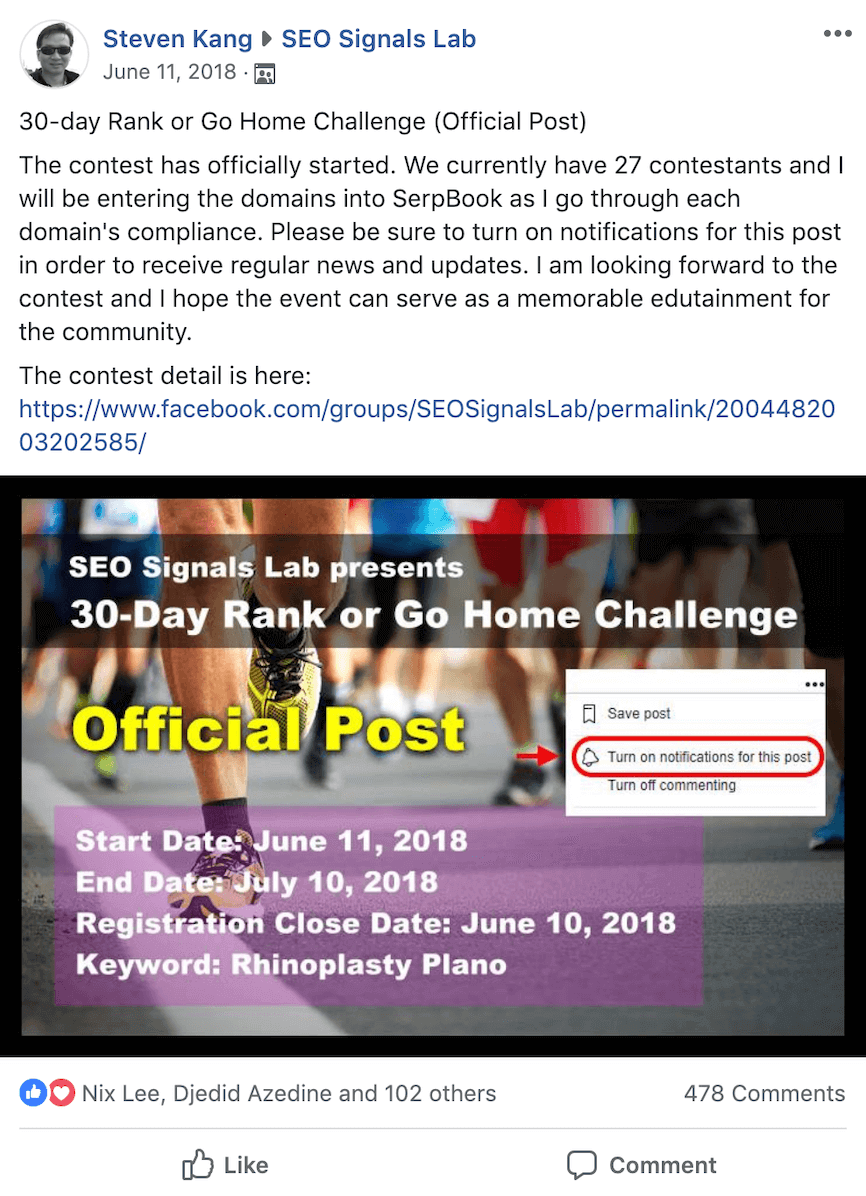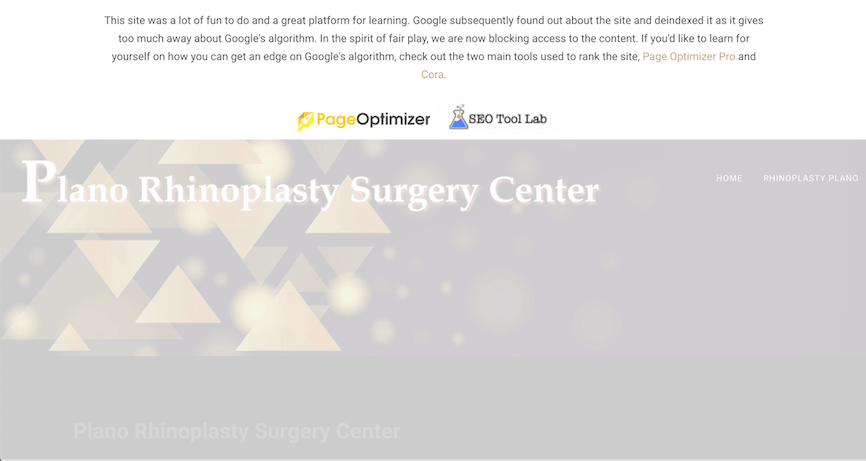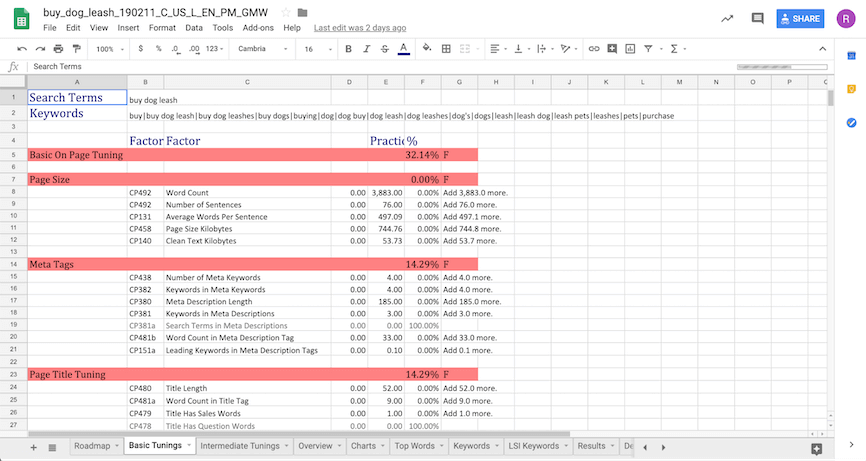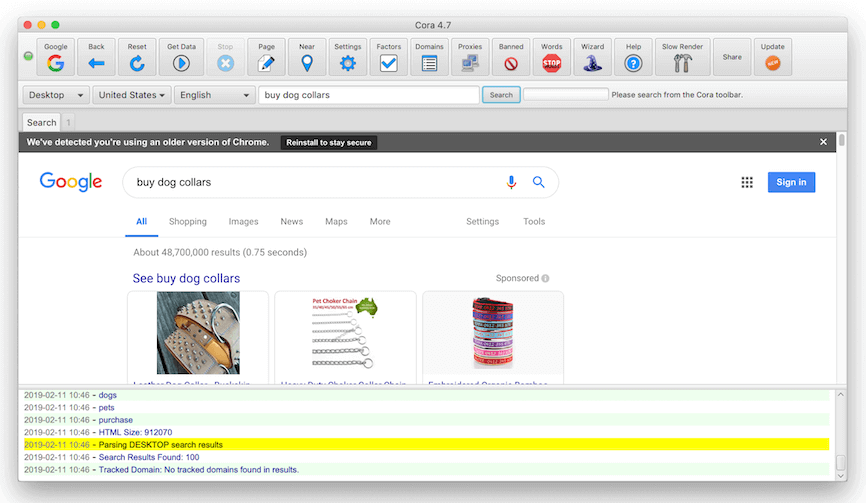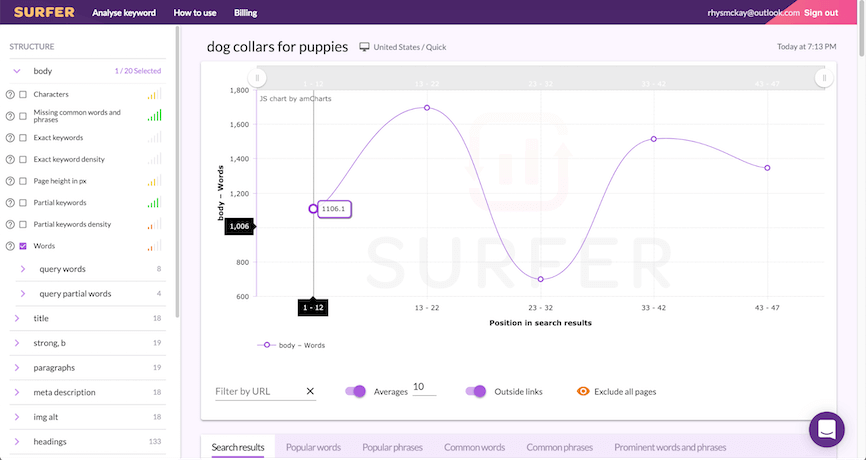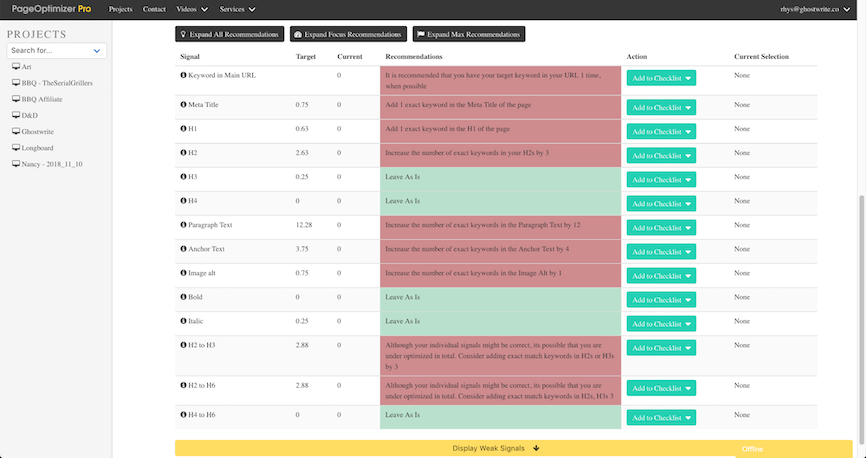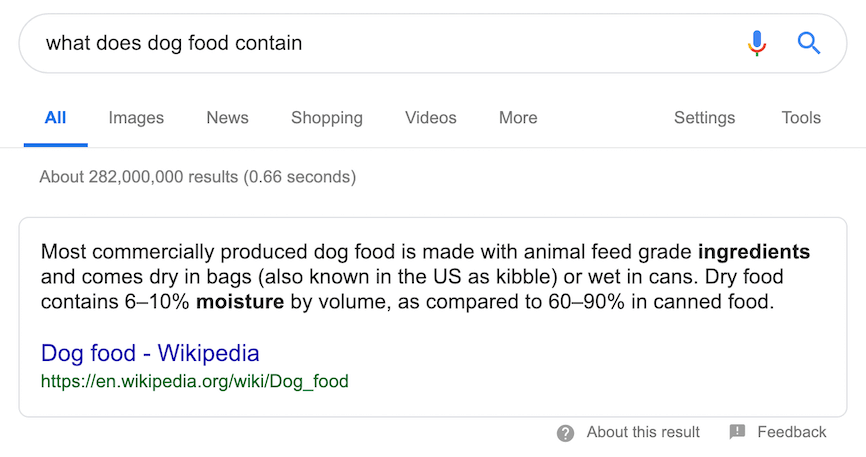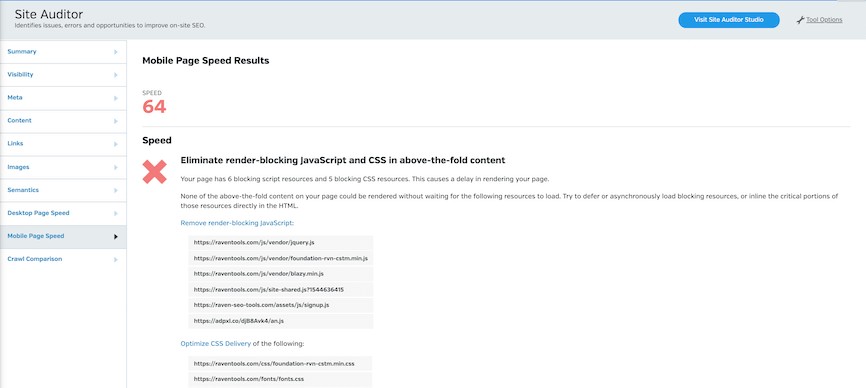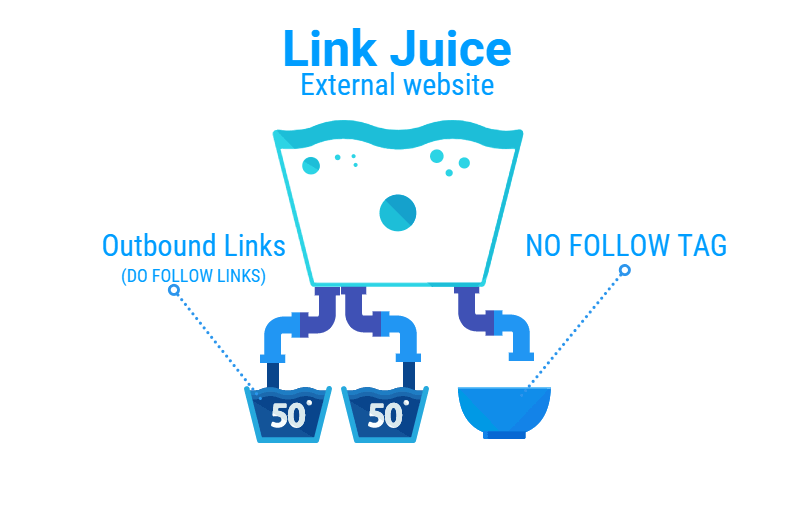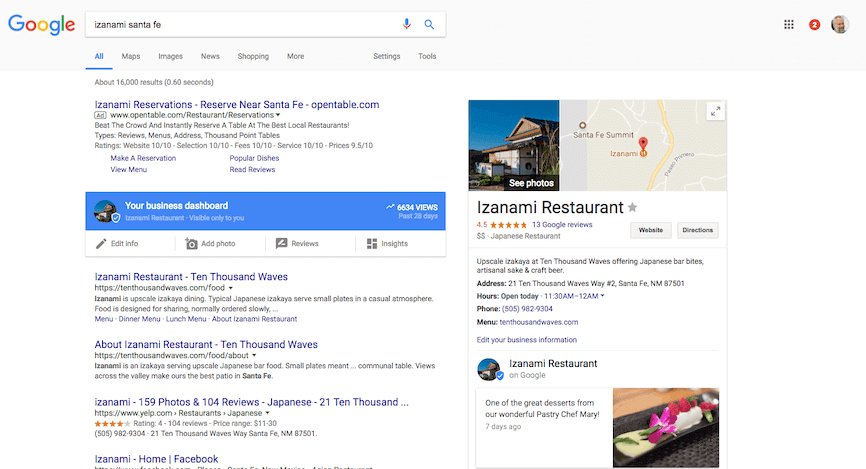Search engine optimization is a fairly young field, having been started in the early 90s along with the rise of the first search engines themselves.
While twenty-five years sounds like aeons in the infamously dynamic web industry, it’s only in the last 10 or 15 years that the innovation of SEO has truly made it an inseparable cornerstone of internet usage.
With SEO, there’s plenty of truth to the old saying, “Necessity is the mother of invention”, as the constant updates to SEO technology make change in practices not just preferred, but absolutely essential.
That’s why it’s important that the best SEO specialists aren’t just masters of the current body of knowledge, but also mavericks at the forefront of new practices, applying new knowledge and innovating on old ideas to keep up with the tides of progress.
In this article, I’m going to discuss some SEO basics in 2019 by giving a primer on the cutting-edge trends and practices of this ever-shifting landscape of search engine optimization.
SEO Basics
For those who might be uninitiated, before we stuck into the nitty-gritty of SEO basics, let’s have a brief primer on what exactly search engine optimization is.
So, search engines use automated programs called “crawlers” which traverse the entirety of the Internet and visit websites looking for patterns, keywords, design elements, and other content.
Using this information, the search engine creates and stores an image of EVERY website that describes how relevant it is to various topics and searches, in a process called “indexing.”
Any time a search is made, the search engine looks at its vast index of websites and provides the users with a ranked list of websites that tries it’s best to represent exactly what the user wanted to find.
Search engine algorithms are almost never directly published by providers like Google, though these providers often give recommendations and suggestions on what practices can hurt or improve rankings.
Search Engine Optimization is the process of:
- Finding out what specific influences cause a website to rank highly for a specific search term.
- Optimizing websites and content in order to fit those influences, and therefore rank higher for the chosen search term or “Keyword”.
What Are SEO Keywords?
Keywords are specific words or phrases that search engine crawlers use to determine relevance.
This relevance is based on how many times users have searched for that keyword over a given time period—a metric known as “search volume.”
When you’re building content for a website, an SEO specialist will have a keyword strategy in place that will outline:
- Which keywords the content will be aiming to rank for.
- How the keywords are going to be woven into the site structure.
An effective keyword strategy will improve your rankings creating this strategy involves a great deal of keyword research.
SEO Keyword Research
Keyword research will have you using a variety of research skills; market research, keyword volume analysis, and industry analysis, just to name a few.
The purpose of this is to discover which keywords customers within your target niche are searching for.
By identifying what these keywords are, you’ll be able to choose and target exactly the type of traffic that visits your website.
The Secret Behind Search Intent
Search engines have come a long way from the simple keyword-matching robots they once were. Thanks to improved algorithms, natural language processing, and recent strides in machine learning, search engines are now capable of analyzing user intent more accurately than ever before.
Search engines aren’t just capable of loosely understanding search intent—nowadays they’re actually focusing on it.
This was actually explicitly stated in Google’s 2013 Hummingbird update, which outlined how search intent would become more important than straight-up keyword matching when Google analyzes queries.
Short-Tail vs Long-Tail Keywords
While they do have their time and place in any SEO strategy; Short-tail keywords—which are shorter, more general keywords—aren’t always the best way to go about getting targeted traffic to your site, even though they might have greater SEO search volume.
Shorter keywords with high search volume are not only extremely competitive, but also have an extremely vague search intent.
This means that not only will you have a hard time competing with the biggest corporations on the net, but you’ll be pulling in users who aren’t necessarily interested in your website.
For example: A search for ‘dog food’ will yield close to 3 billion search engine results.
Not only is the keyword incredibly competitive—with big players such as Amazon gunning for the top spot—but the keyword is also unspecific and untargeted.
Is the customer searching for information on dog food? Are they looking for a handy guide on how to choose the healthiest dog food?
Are they looking for puppy food? Elderly dog food? It’s extremely vague what the user is searching for when they search “dog food” and as such it has vague search intent.
If you want to sharpen your keyword to target a more specific audience this you’re better off using a long-tail keyword.
Long-tail keywords are keywords that are four words and greater in length. Long-tail keywords are thus named because they reflect the “long tail” of a search distribution graph, representing keywords with less search volume.
An easier and more targeted long-tail keyword to target might be: ‘best dog food for puppies’.
With all that said, short-tail keywords are a necessity in every SEO strategy. They can be incredibly powerful if you manage to succeed in ranking highly for them, and can bring in an enormous amount of traffic to your site—and as they say, quantity is a quality in and of itself.
Long-tail keywords however are well-suited to the rise of semantic search, which is the kind of search that’s done in conversational, natural language, often performed through voice search. Examples include virtual assistants such as Google Assistant and Amazon Alexa.
Basic Keyword Modifiers
One method of adapting your keywords for search intent and long-tail appeal is to use keyword modifiers. These are words that you add to your short-tail keywords to make them a touch more specific.
In our ever-useful “dog food” keyword example; converting it to the long-tail keyword: “dog food for puppies”, uses the modifier “for puppies” to target specific search intent.
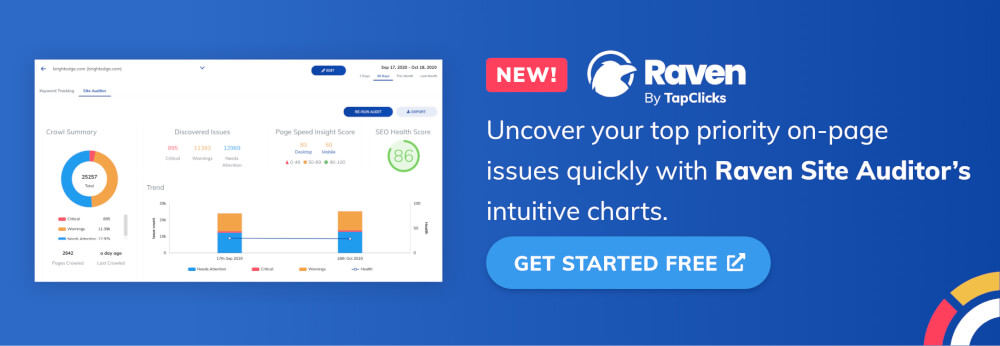


Let’s look at some SEO keyword modifier examples:
Adjective Modifiers
Adjective modifiers use general adjectives to describe the original keyword. These are often used for products and services.
Examples include:
- Best
- Top
- Legit
- Custom
- Bespoke
- Premium
- Affordable
Adjective modifiers are the kind of modifier that searchers tack on when they’re looking to compare different products and find the best one, it’s usually an indicator of reasonably high buyer intent.
Ready-To-Buy Modifiers
Ready-to-buy modifiers allow you to convert your product-related keywords to transactional keywords, which are keywords that users search for when they’re ready to commit to a purchase.
Examples include:
- Promo
- Sale
- Buy
- Cost
- Purchase
- Shipping
- Delivery
Targeting these keywords means that you’re targeting users who are at the final stages of the customer journey, capturing their search intent with very active purchase-related modifiers.
Ready-To-Try Modifiers
Ready-to-try modifiers are modifiers for keywords that target users who want to trial a product or service.
Examples include:
- Download
- Trial
- Demo
- Brochure
- Subscribe
- Sign-up
Use these modifiers to target users with free trials and demo versions of your work.
Question Modifiers
Question modifiers include the Five W’s and How:
- Who
- What
- Where
- When
- Why
- How
Use these modifiers to target semantic searchers enquiring about your niche.
Prepositional Modifiers
Prepositional modifiers use prepositions to add to the main keyword; for and in are strong examples. You can use this to create segmentations such as “for students”, and “for women”, etc. You can also assign geographical location, such as “in Chicago” or “in the United States”.
There are many more modifiers out there that vary based on industry. Some will use brand names within the industry, while others use terminology that’s unique to the niche itself.
Keyword Difficulty
Keyword difficulty (otherwise known as KD) refers to the difficulty in the amount of time, effort, and resources it takes to rank a given keyword. Every major SEO tool has its own metrics for creating a keyword difficulty score. For example, Ahrefs’ solution looks at the “number of referring domains the Top 10 ranking pages have” in order to calculate an approximate KD.
Keep in mind that no matter how accurate a KD score may appear to be, it still shouldn’t be the defining factor behind keyword competitiveness and is best used as a guideline during keyword research.
You’ll need to analyze the search engine results pages for each keyword yourself if you want to get entirely accurate information.
Keyword difficulty is a valuable metric for figuring out which keywords to aim for when you begin your SEO strategy, but it’s important that you remember that the statistic should always be taken with a grain of salt!
SEO Keyword Tools
Keyword research tools range from extremely basic manual searches, to advanced tools that are invaluable to providing effective SEO. Let’s take a look at some of the most popular SEO keyword research tools you should be using in 2019.
The Basic Option: Google Autocomplete
Requiring no extra tools, Google Autocomplete is by far the simplest method of discovering keywords.
When you’re typing anything into Google’s search box, you might notice a few suggestions popping up. This is Autocomplete, a helpful feature by Google that suggests possible searches that you might be looking for, given to you in real-time as you type them in.
What’s interesting about Autocomplete is that these recommendations are actually lists of popular high-volume long-tail keywords related to what you’re typing. So one way to perform keyword research is simply to input your short-tail keywords into Google, and list down the predictive suggestions that pop up in Autocomplete.
This is a time-consuming process, but it’s also very easy to use and requires no external tools. Many SEO beginners start with Autocomplete for keyword research before they graduate to more powerful tools.
The Major Players
Autocomplete is great and all, but it fails to report the finer details of keyword research, and doesn’t promote predictions with any clear rankings. For any real SEO work you should be turning to the big players.
RavenTools: SEO Made Easy
(PS. That’s us!)



RavenTools features a host of SEO tools including; site audits, keyword research, backlink analysis, rank tracking and a whole lot of extra comprehensive data that’s extremely valuable in the hands of a skilled SEO specialist.
Our comprehensive Research Central feature includes a powerful keyword research tool that can describe keyword competitiveness, search volume, relative popularity, and other highly valuable information.
We also provide in-depth SEO courses and expertly written advice articles, for those who want to stay a step ahead of the competition.
Ahrefs: The Standard Toolkit
Ahrefs is one of the most popular SEO companies in the industry, offering a wide range of quality tools that are quite valuable in the arsenal of any seasoned SEO professional.
Aside from the strong base features, Ahrefs also has advanced tools like; return rate, estimated clicks per keyword and search, percentage of paid clicks, and tons more. All calculated using huge amounts of monitored data. It even allows you to check out the ranking history for the top pages.
Moz: Back To Basics
Moz is rather well-known in the SEO community for the SEO advice articles they regularly put out. The body of knowledge they’ve built up over the years has led to the creation of their very own SEO tool.
This tool allows you to organize your keyword searches into intuitive groups, allowing you to compare your keywords and refine your strategy. It’ll also provide you with suggestions for better keywords using an up-to-date database. You also get insights into KD, organic click-through rates, and you can even add custom weighting for certain keywords that matter to you.
Other Useful Tools
There’s a whole bunch of other tools out there with a more specific focus than the top tools we recommended.
Here are some that are worth looking at:
On-Page SEO Basics
So once you’ve completed your keyword research you can start your on-page SEO, which is, to use your research to create or edit your web page to rank for your desired keywords
Your on-page SEO is reliant on a LOT of different ranking factors; such as the quality of content, the URL slugs of each page, and the images, the alt text. It also includes under-the-hood content like the HTML source code and meta tags.
On-page SEO exists in contrast to off-page SEO, which focuses on building your site’s backlink profile.
Basics Of SEO Copywriting
It’s easy to dilute SEO down to a simple science of numbers and algorithms, but all things being equal, having top-quality copywriting will make or break your ability to rank for keywords. Google doesn’t (yet) have the capacity to read and understand entire articles and determine their writing quality, but low-quality content with bad grammar or low readability will certainly turn readers off and cause them to navigate away as soon as they read your first sentence.
A user clicking out of your page after only a few seconds is referred to as “bounce rate”. Google will keep track of your bounce rate, and if enough people are running away from your content it will negatively impact your rankings.
However, it’s important to note that these ranking algorithms aren’t perfect decision-makers, and are still vulnerable to certain SEO exploits and techniques that can strongly influence the way content is ranked.
Weaknesses In Search Algorithms
One fairly recent example that showcased the weakness of search algorithms is the “Rhinoplasty Plano” incident. A group called SEO Signals Lab held a competition called “Go Rank Or Go Home,” in which participants were given 60 days to rank highly in the search term, “Rhinoplasty Plano”.
The winner of the competition utilised a conventionally successful SEO effort, RhinoplastyPlanoTexas.com, which used a clean minimalistic WordPress site that loaded quickly and carried somewhat mediocre content.
However, the second-ranking slot was a site called Rhinoplastyplano.co that was filled with lorem ipsum placeholder text with strategically-placed keywords for maximum search engine optimization.
The creator, Kyle Roof of High Voltage SEO, revealed that he used his own tool, Page Optimizer, as well as the Cora SEO software, to determine how best to rank for the keyword without having to write any real content.
This unique victory exposed many of the weaknesses in the Google search algorithm that illustrated just how important the right SEO techniques can be when it comes to ranking. It’s not just enough to have good content or a great user experience. You need to use every tool at your disposal if you’re going to emerge from the massive sea of competition.
Funnily enough, Roof’s bogus website was delisted from Google SERPs after the story went viral. He mused that this is probably because his site’s success reveals too much about Google’s algorithm.
It furthermore illustrates just how much of these search engine results are actually hand-tuned through manual action by human administrators.
But don’t get me wrong!
Quality copywriting is still a big, important part of SEO, especially in the long run when you’re looking to build up your site authority and brand recognition. No one will come back to you if your content isn’t valuable!
Universal Advice?
Take a gander at the various dime-a-dozen SEO advice articles out there. Everyone has some kind of canonical, one-size-fits-all advice to offer that they’d claim is a surefire way to soar up through the rankings. You’ll start seeing blanket advice like “2000 words is the sweet spot for high-ranking content!” and “1-2% keyword density is ideal for all articles!”.
The reality is that there is no such thing as one-size-fits-all advice for SEO, there’s no 100% “right” or “wrong” way to do it. Every keyword has different ranking factors, from geography and industry, to culture and target demographics. You might find that one piece of advice works for one keyword, while a totally different approach is best for another!
The real advice here is to look at the data and analyze the context.
A great way to get a tailored estimation for optimization is to use an SEO tool.
Using a premium SEO tool will automatically conduct keyword and market research, and analyze exactly what you need to do in order to achieve your desired ranking.
SEO Tools
With that said, SEO tools are more than just keyword research machines. Some of them provide a comprehensive suite of features that can provide recommendations, competitive analysis, and a lot more. Others narrow down their focus to a specific purpose or SEO field. They don’t just take away a big chunk of research legwork—they offer plenty of value and insights that can only be found by using them.
Cora
Cora is an SEO tool that works with correlation data, reverse-engineering the way that certain keywords are ranked by analyzing over 540 SEO data points.
With this information, Cora can provide detailed recommendations on how you can improve your site. It can tell you that you need more sentences in your long-form articles, or that you need more keywords in your H1, H2, and H3 headers. It provides a wealth of possible solutions to SEO ranking problems.
Some SEO specialists might have a problem with this idea of inferring ranking factors, but oftentimes this is just a way of deflecting attention away from a lack of grounding in mathematics and statistics.
Many people think that it’s possible to actually use intuition or an educated guess to make SEO decisions. Unfortunately for them, unless you’re really lucky, it just doesn’t work. SEO is based on algorithms and research, and just as scientists have microscopes and spectrometers to observe their fields, SEO experts have tools like Cora that can detect what exactly influences SERPs and rankings.
SurferSEO
SurferSEO is a cloud-based SEO tool that focuses its efforts on comparing your page with the competition. It zeroes in on over 80 on-page SEO ranking factors that affect the success of the top 40-ranking pages for your keyword.
It provides insight into how well your page is doing relative to high-ranking pages across your industry, and acts as a great source of competitive intelligence.
POP
POP’s unique selling proposition as an SEO tool is that it only really takes into account a select few factors, just around a dozen. However, each of these factors are handpicked and have undergone rigorous testing to ensure that they are crucial to page rankings. It’s a simple tool, that cuts right to to the factors that matters, so you can get your content up and ranking fast.
Pro-Tip: The Myth of Keyword Stuffing
If you have any cursory knowledge of SEO you’ve probably heard of keyword stuffing. This is when the writer or the SEO specialist just haphazardly throws in as many related keywords as possible into their on-page SEO.
This technique was originally quite effective, and was developed back in a time when search engines were a little less intelligent than they are now.
Nowadays, keyword stuffing is looked down upon by the SEO community, simply due of the fact that search engines have evolved rendering the overuse of keywords a cheap technique that will cause your rankings to suffer.
Rankings aside, keyword stuffing just looks spammy which can definitely increase bounce rate. Expert SEO specialists generally recommend a keyword density of no more than 5%.
With that said, what happens if your SEO tools tell you to have a certain keyword density, and it seems to border on what you think might be keyword stuffing?
Well, simply put, you should trust your tools.
There’s no such thing as an optimal keyword density that applies to every page universally. There’s always going to be an individual sweet spot of a perfect keyword density that doesn’t register as spam, but still shows Google that you emphasise certain words in your content. And you’re not going to be able to know for sure what the optimal keyword density is without using SEO tools.
What’s equally important is knowing where to put your keywords. This is where having strong copywriting skills comes in handy. A poor copywriter will make keywords stand out like a sore thumb. But an expert copywriter will blend them seamlessly into the content, and keep the piece engaging.
Sooo… Which Is The Best Tool?
Each of these tools have their merits.
Cora and Surfer are similar. Cora analyses a few hundred ranking factors and correlates them against ranking positions for a given keyword. This means you can accurately determine exactly what is needed to rank.
Think of Cora like onpage SEO on steroids.
POP on the other hand takes a few of the most influential ranking factors and correlates them against ranking positions. POP is optimal for quick wins or for those who don’t have a big enough budget for Cora.
SurferSEO is the new kid on the block, boasting a gorgeously modern GUI & a raving fanbase. It’s very similar to Cora but far more visual—displaying graphs and data rather than spreadsheets like it’s analytical counterpart Cora.
Which is best? I recommend you try each out and see which one works the best with your workflow. Each software has a dedicated fan base of users that swear by the results.
For those looking for something quick and easy, POP is is ideal.
Are you a spreadsheet freak? Cora all the way.
A modern, cloud based system you can access from anywhere, with 3 free data reports a day, SurferSEO is right down your alley.
Tuning Your On-Page SEO
Meta Description & Headlines
Meta descriptions and headlines are among the very first things that people see when they discover your page in the SERPs. Crafting them in such a way that addresses search intent, will pique searchers’ interest, and further improving your rankings. If you’d like to get in depth; read our full guide to writing meta descriptions for SEO.
Schema
Schema is the structured data syntax that defines how rich snippets are displayed in search engine results.
These can be additional, eye-catching details like product reviews, prices, business hours, or other pieces of information that can be useful to people searching for your business.
By implementing a detailed schema strategy, you can improve your SEO in uniquely organic ways, appearing in Google Local Knowledge panels and showing valuable information to potential customers.
User Experience
The user experience defines whether people will find your site intuitive. Frustrating interfaces will definitely cause your bounce rate to skyrocket. Sites with better UX always lead to better conversions, as leads spend less time fiddling with your site design, and more time getting what they want out of your website.
Site Speed
Page loading speed is one of the metrics that Google explicitly mentions as one of its ranking factors. Slower-loading pages are heavily penalized, and it’s not just a pure SEO ranking factor that’s at work here. The average page loads in just over 3 seconds. Any more than that, and the bounce rate shoots up by 38% at the 5 second loading mark.
Luckily, there’s a wide variety of things you can do to improve your site speed. One of the most important first steps though is to listen to the tools that you already have. The Google Search Console recently started providing webmasters with new warnings about factors affecting page performance. Use these warnings, as well as the Lighthouse auditor, to figure out how to improve your site speed.
You can also add caching plugins, code optimizers, and Gzip file compressors to reduce the size of your site at the point when the user loads it. You can even convert all of your images to web-quality JPEGs, avoiding high-quality PNG and other formats that may take a long time to load.
Raven Tools has speed audits included in our Website Auditor so you can also use this tool to easily get a list of suggestions along with a speed score.
If your chat software, scripts, and other additional page elements are slowing you down, then it’s time to take a long walk and think about how useful they are to your site experience relative to the impact of their slowdown. You could also try running gtmetrix and checking out their recommendations for cutting down on scripts.
Finally, consider using a CDN to host your content so that your loading time isn’t based on your hosting provider’s ability to handle the bandwidth, but rather on a robust content delivery network that is designed solely to serve web content.
Clean, Simple & High Readability
The trends of readability on web content are moving towards simple and clear language. It’s wise to avoid excessively high-brow language and stick to 20-word sentences and 3-4 line paragraphs. Use tools like Yoast SEO, Hemingway and Grammarly to analyze your content’s readability and make it more accessible and engaging.
Mobile Optimization
You should also ensure that your site is mobile-friendly. Google explicitly penalizes sites that aren’t mobile-optimized, and with an ever-increasing proportion of mobile users taking over web traffic, it only makes sense that you should be tailoring your site experience to accommodate them.
SEO Link Building
Another extremely important and basic SEO element is site authority, and one of the principal means by which Google analyzes this authority is by determining a site’s backlink profile. Having a lot of sites linking back to your website is a clear cut sign of authority, but it’s important to note that not all links are created equal.
The inequality of link authority stems partly from the fact that there are a variety of ways to create and pad backlink profiles—some very by-the-book and ethical, while others not so much.
Coloured ‘Hats’
Just as in the world of hacking, SEO specialist tactics can be described in “white hat” which means ethical tactics, and “black hat” which means partially unethical tactics.
White Hat SEO
White hat tactics in SEO follow the rules laid out by Google. That means no spam, no nasty link buying or harvesting, no content farms. Everything’s done according to the guidelines.
Guest Posts
Perhaps the most innocuous method of getting your content out there, guest posting is little more than negotiating with a well-followed blog or content producer to accept your work and put it on their page.
When doing this, you typically want to submit to sites whose values align with yours, and who you would like to have associated with your brand.
In general, guest posts shouldn’t be hard sells of your products and services, but they should organically link back to your site after providing value to your readers.
Pitching Journalists
Another way of getting links is to pitch yourself to journalists. This is about as difficult as it sounds. Journalists, especially tech journalists, have seen it all: so-called “disruptive forces” and “knowledge leaders” are nothing new to them.
As a result, if you want to capture their interest, skip all the buzzwords, and avoid long introductions. Just make it short and sweet, cut to the chase and demonstrate how you can bring value to their readers.
You should also tailor your pitch to each specific journalist, this shouldn’t be a template copy-paste job, you should look at their background and the site they write for.
And of course, make sure you get the message across as quickly and cleanly as possible, they likely go through dozens of these sorts of messages per week so make it snappy.
Black Hat SEO
In the unethical realm of Black Hat SEO, specialists like to bend the rules in their favour in order to get the rankings where they want them.
It’s definitely effective, but Black Hat SEO is risky, and can get your page delisted by Google if you’re caught. So it’s generally not recommended for those still learning SEO basics.
PBNs
Private blog networks, or PBNs, are one of the iconic elements of black hat SEO. They disguise themselves as seemingly authoritative blogs and sites, and will host your content and backlink to your site for a fee. Google has been cracking down on these for as long as they’ve existed, but they always manage to pop right back up.
SEO Link Juice
Remember how I said that not all links are created equal? A big part of this stems from the fact that different pages carry different weights of authority.
SEO Link juice is a colloquial terminology used in the SEO world that refers to the value of backlinking between pages to help with ranking.
Within a niche, sites link to other sites in an enormous web of linking, if your site is part of this web then Google will view you as having some authority in the niche and will therefore rank you higher. The more that your site is entrenched and tangled in this web, the more valuable Google assumes your site is.
SEO On-Page vs Off-Page
Newcomers always ask whether it’s more important to focus on; their page content, or their backlink profile. And the answer is (predictably) that they’re two sides of the same coin and are actually both equally important.
Obviously you will need to have proper keyword structure, schema, meta tags, headlines, etc, if you want to achieve a high ranking in your search keywords. But you’ll also need backlinks to build your site authority, and rise up as a valuable search result when you start ranking.
On-page SEO sets it up, and off-page SEO hits it out of the park.
It’s important to remember that there is no shortcut to this stuff. There’s no single, magical SEO target to aim for that will give you success. SEO is a science and a process, and it cannot be rushed.
Optimizing Your Site Structure For SEO
Silo
SEO siloing has been all the rage lately, but really as simple as having a logical information structure within your website. Siloing your content means taking your users on a competently-directed journey through your site.
As a result of siloing users will often have an easier time navigating your website. In this way, it’s a cousin to user experience and will encourage engagement and prevent users from getting lost and confused.
Another positive result of proper siloing is that your content can be categorized according to high-performing keywords, which will help Google understand your site layout and improve your domain authority.
Internal Linking
Internal linking refers to using hyperlinks that connect one part of your site to another. Internal linking has somewhat less value than backlinks from external sites. However, just as link juice flows from one site to another, it can also flows within the same site.
Therefore, if you want to draw focus to certain parts of your site, you’ll want to build a strong internal linking structure around these focal points.
Local SEO
For local businesses, local SEO is of utmost importance if you want to beat the competition in the area. To take advantage of Local Seo you’ll want to use effective schema markup, and rank highly for keywords that are specific to both your niche and geographical vicinity.
This will put your website as a top recommendation for users within your area when they’re looking for local businesses in your industry.
SEO & Google My Business (GMB)
Google My Business is a powerful tool for any business, especially local ones. Being able to control the way your business appears on Google is incredibly valuable, allowing you to promote it with value-adding content such as images, shop addresses, business hours, and much more.?
The way you manage your information will dictate whether you appear in carousels and knowledge panels, and will affect how you appear on Google Maps. On top of that, user reviews are also important ranking factors, not just purely due to SEO algorithms, but also for obvious reasons of consumer psychology—research has found that an increase in rating of one star can improve a business’s revenue by as much as 9%!
Branding: Is It An SEO Ranking Factor?
Branding itself isn’t tracked by Google as an explicit ranking factor. However, good branding does have its merits in the sense that it independently earns organic links and good SEO practices. Strong brand awareness leads users to returning to your site, and evergreen branded content will ensure that your link authority remains relevant long after your content was produced.
Conclusion
The ever-shifting sands of SEO can be somewhat intimidating, even for intermediate specialists who might not be on top of the latest trends. With new technologies and practices coming out constantly, and even more advanced machine learning updates on the horizon, it’s easy to get to end up lost if you’re trying to pick up SEO for the first time.
Even amongst all this change, there are some rules that just don’t change; sharp copywriting and organic linkage are always going to be hugely important parts of SEO, and having a well branded site that loads quickly is just as important as any of the latest and greatest optimization tools.
The key is to build a site with a strong foundation, while simultaneously reaching out into the brave new world of innovation. So even if you can’t quite take advantage of the cutting-edge techniques, you’ll always have a solid authoritative base to fall back on.
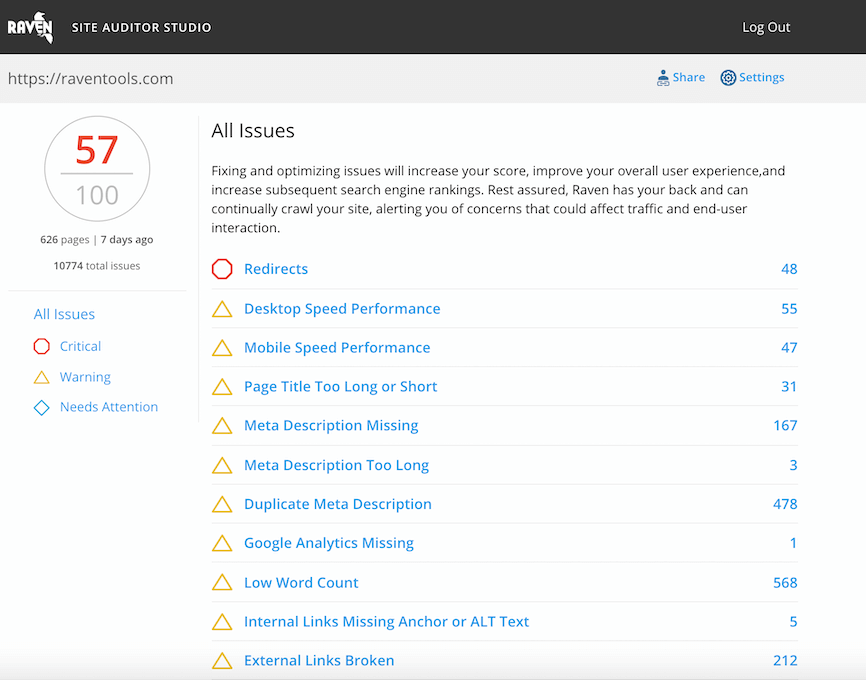
Analyze over 20 different technical SEO issues and create to-do lists for your team while sending error reports to your client.





